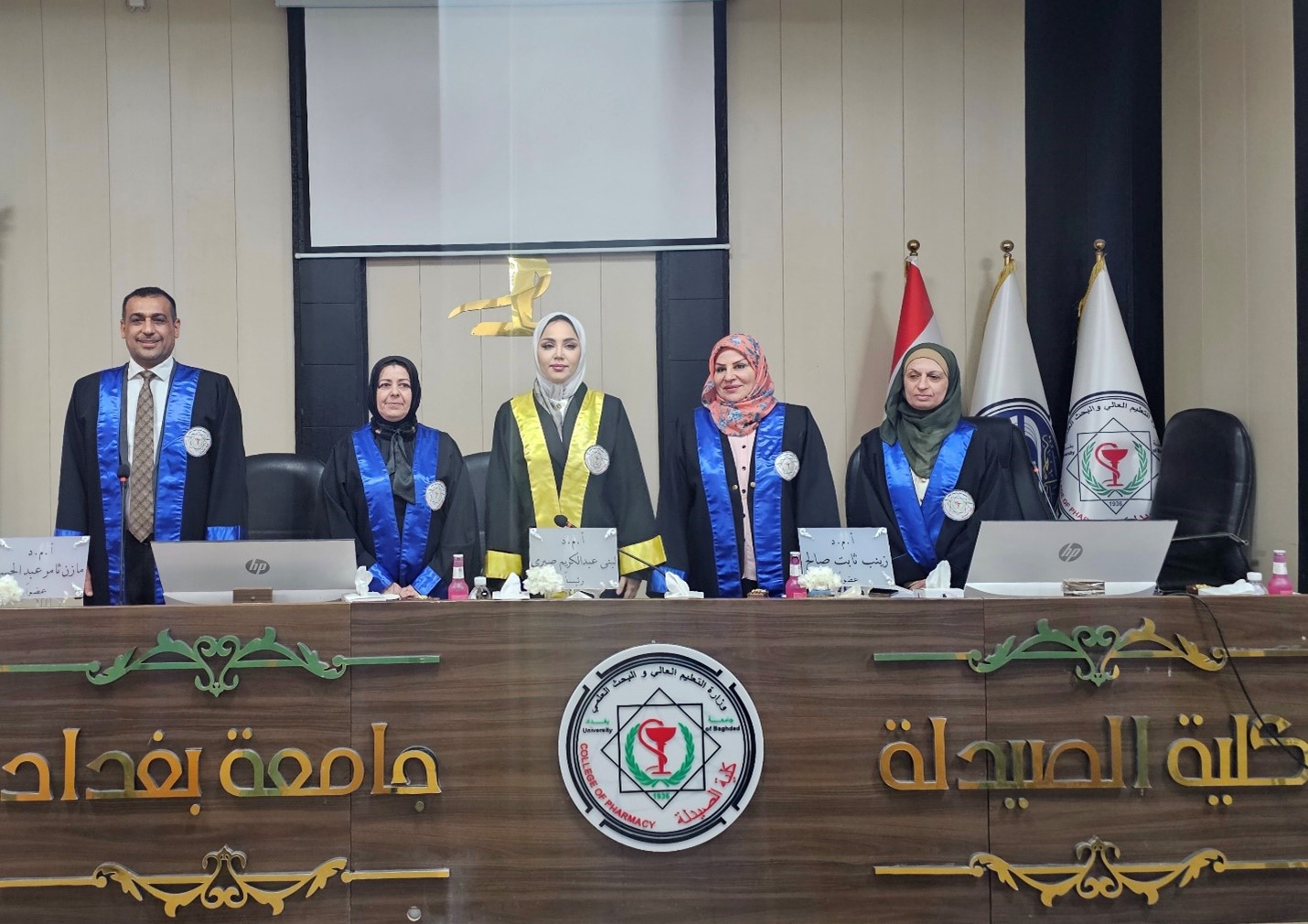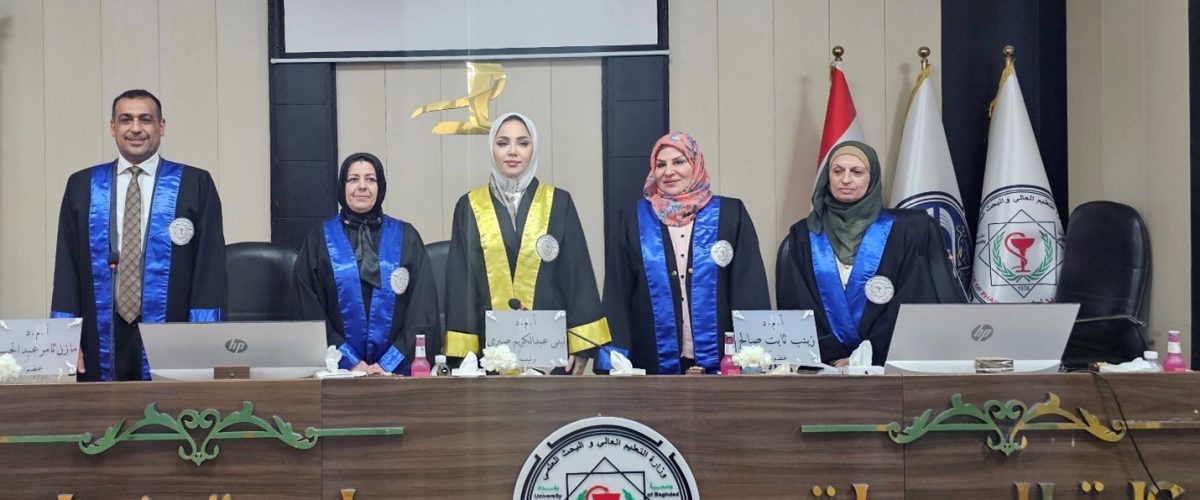The College of Pharmacy discussed the MSc thesis entitled “Formulation and Characterization of Ondansetron Hydrochloride Dihydrate Nanocrystals as Fast Dissolving Oral Dosage Form” by the student Zainab Atshan Khalaf and the supervisor, Assistant Professor Eman B.H. Al-Khedairy, at the Pharmaceutics Department. The study aimed to formulate and characterize Ondansetron Hydrochloride (ONH) as nanocrystals to improve its solubility and dissolution rate, then load these nanocrystals into sublingual film to avoid first-pass metabolism. The study included the preparation of ONH nanocrystals using the nanoprecipitation technique. Different stabilizers (Soluplus®, Kollidon VA 64 ®, and Brij® 35) were used with different stabilizer-to-drug ratios. In addition, different formulation variables were studied, including solvent-to-antisolvent ratio and stirring rate. The results of particle size and polydispersity index (PDI) were analyzed using Design Expert software to determine the desirable ONH nanocrystal formulation. This formula was further characterized for its surface morphology using field emission scanning electron microscopy (FE-SEM), and its crystalline nature by differential scanning calorimetry (DSC) and X-ray diffraction (XRD), while Fourier transform infrared spectrophotometry (FTIR) was utilized to investigate the interaction between ONH and the stabilizer. The optimized formula was incorporated into a sublingual fast-dissolving film by the solvent casting method, using Pullulan, HPMC E 5, or PVA as a film-forming polymers and PEG 400 or glycerin as a plasticizer. The resulting film was evaluated for appearance, weight, surface pH, folding endurance, drug content, in-vitro disintegration time, and dissolution at pH 6.8. The effect of temperature on the physical properties of the optimized film was studied by storing it at room temperature and at 50°C for two months . The results showed that the optimized formula stabilized by Kollidon VA 64 in a ratio of 0.75:1 (stabilizer: drug) and solvent to antisolvent ratio of 1:7.5, formulated at a stirring rate of 700 rpm for 60 minutes, had an average particle size of 99 nm, PDI (0.08), zeta potential (-8.45 mV), and released 93.3% of the drug after 90 minutes, which was significantly higher than the pure drug. The nanocrystals also appeared uniform in shape by the FESEM, with reduced crystallinity as shown by DSC and XRD, and compatibility between the drug and Kollidon Va 64 by FTIR. The optimum sublingual film loaded with ONH nanocrystals, prepared using PVA as a film-forming polymer and PEG 400 as a plasticizer, was transparent, homogenous, and flexible, with a drug content of 96%. The film disintegrated within 17 seconds and released 100% of the drug after 2 minutes. This film retained its physical properties after two months of storage at room temperature and at 50°C. The study recommended testing the palatability of the film to improve patient compliance and adherence to therapy. In addition, a longer period is required to study the stability of the resultant film.



